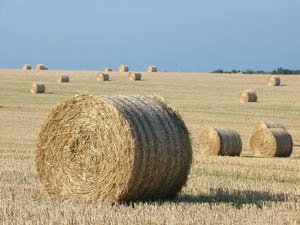The Story of Eight Generations
 Betty Willsher is best known for her studies of Scottish graveyards, but here she tells her own family’s fascinating tale. Beginning in 1805, when her great-great-grandfather, John Russel, an Elgin merchant – who consistently measured his name with only one ‘l’ – rode to the new tweed mills at Galashiels, this is a saga of an ‘ordinary’ family at home and abroad. After concluding his business, John spent a few days with wheelwright Thomas Russell in Peebles, where he fell for his daughter, Janet, whose hand he wrote for on return north.
Betty Willsher is best known for her studies of Scottish graveyards, but here she tells her own family’s fascinating tale. Beginning in 1805, when her great-great-grandfather, John Russel, an Elgin merchant – who consistently measured his name with only one ‘l’ – rode to the new tweed mills at Galashiels, this is a saga of an ‘ordinary’ family at home and abroad. After concluding his business, John spent a few days with wheelwright Thomas Russell in Peebles, where he fell for his daughter, Janet, whose hand he wrote for on return north.
Whether both Russells were related has not been determined by Betty, such are the trying gaps of family research frequently encountered before 1800. Janet’s mother, Margaret, was the daughter of David Grieve of Jedderfield, above Neidpath Castle, by his second wife; famously, he fed the Jacobite army camped nearby in 1745, and had his cattle spared. From his first wife came a daughter, Helen, who by her second husband, James Chambers, was the mother of Peebles’ most famous sons, William and Robert, who founded the publishers, W & R Chambers. While genealogical research over many years can unexpectedly throw up these exciting sidewise links, Betty has only been able to trace Thomas Russell himself as far as his father, Alexander Russell, who set himself up as a wright in Meggat & Lyne, having had his Stobo lands seized after the ’45 Rising. Did he, like Grieve, succour the Highland host?
In marrying John Russel, Janet joined a Moray family who had farmed at Alves for several generations, but had legendary links with the Royalist Russell, Alexander, said to have fled to Elgin after Marston Moor; more prosaically, they were a branch of the Elgin Russells who acquired Blackhall, Aberdeenshire. However, the Bedford Russells’ goat device and motto – CHE SARA SARA – once carved on the Blackhall gates, also appears on the grave of Alexander, the third son of John and Janet Russel – one of the many family mysteries still haunting the author, who has diligently visited all places associated with the family as far as she has been able. This Alexander – he preferred two ‘l’s – became proprietor of the Elgin Courant, following his father’s purchase of the Courier plant in 1834; a rich source of information for Betty in her quest. Alexander’s short-lived marriage to Keturah Merson in 1850 introduced the unusual, if not unique name of Abraham’s second wife to the family, one which has been handed down – and multiplied ‘biblically’ – through five generations.
Indeed, another source colouring these pages has been the collection of diaries of their daughter ‘Tudy’ (Keturah) Russell, whose writings portray the mores of the late 19th century, the rounds of social engagements and obligations. They also cover her continental tour and visits to London and Edinburgh where, at Blacket Place, she met her Grieve relatives, among them, Symington Grieve, the author of The Book of Colonsay and Oronsay; his daughter, Marjorie, married Russell Thin in 1924, and in turn, their daughter, Jean, wed Robert Bartholomew, linking some of the big names in Scottish publishing.
There are many such interesting by-ways in this book, yet they are threaded together into the whole historical perspective with ease and acute observational asides. The text is accompanied by many photographs – colour is reserved for the youngest generation. Several explanatory family trees help unravel the various branches at their respective chapter ends. This is a book of wide appeal, especially to family and local histor
ians.
A Scottish Family: The Story of Eight Generations by Betty Willsher is available from Librario (ISBN 1904440517 £9.99 PBK).
© Neil Macara Brown 2005

Comments